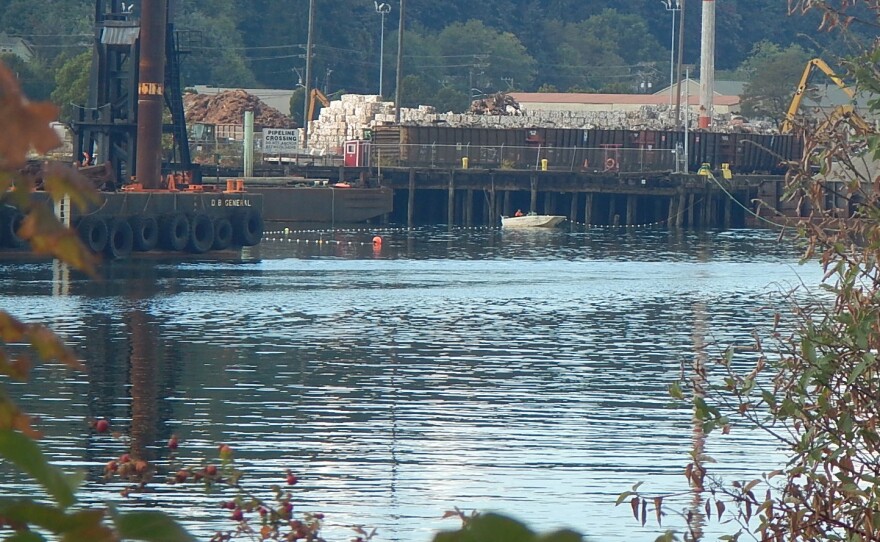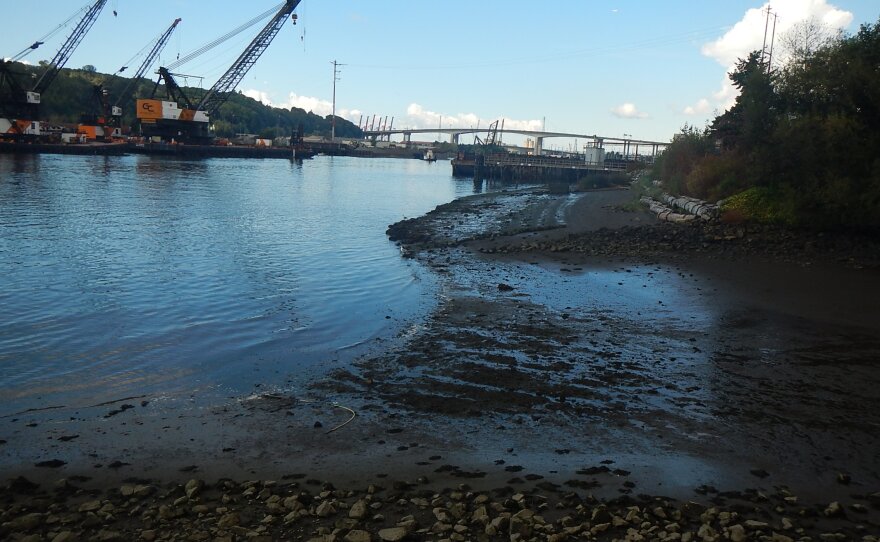Dozens of the worst hazardous-waste sites in the Northwest are not being cleaned up, for lack of personnel to do the job, according to a report from the inspector general of the U.S. Environmental Protection Agency.
The federal watchdog singles out Seattle's lower Duwamish River as a contaminated site where work has been delayed.
People who work on the Duwamish say its cleanup is right on schedule.
According to the inspector general — as well as a series of reports from various government auditors – the EPA has a long history of not putting people where they’re most needed, with some regions, including the Northwest, getting the short end of the stick.
As a result, some of the nation’s most poisoned places have gotten little attention from the agency in charge of making America clean again.
“People are being exposed and harmed by the chemicals because EPA isn't able to clean them up,” said Tina Lovingood with the inspector general’s office, an independent arm of the EPA.
Related: How the plane that won WWII polluted the Duwamish River
Many cleanups have stalled for years or decades. The report found that 34 hazardous hotspots in Alaska, Idaho, Oregon and Washington have no EPA staff assigned to work on them.
“Sixteen of them are on the National Priorities List, meaning that they're the worst in the country,” Lovingood said.
At four of the Northwest region’s unstaffed toxic-waste sites, human exposure to contamination is “not under control,” and at three, the movement of toxic waste into groundwater is “not under control.”
Other National Priorities List, or Superfund, sites in the region have been short-staffed, including the lower Duwamish River, according to the report.
“EPA reported to us that it did not have enough staff to complete all of the work that was ready to be performed at the site,” Lovingood said.
But go down to the muddy banks of the Duwamish in South Seattle, and you’ll get a different view.
Seattle’s River
[asset-images[{"caption": "James Rasmussen of the Duwamish River Cleanup Coalition", "fid": "139524", "style": "card_280", "uri": "public://201709/DSCN0284.JPG", "attribution": "Credit KUOW Photo/John Ryan"}]]
“We have not seen a slowdown at all here,” James Rasmussen said while sitting on a log in a tiny park along the mostly industrial river. He’s head of the Duwamish River Cleanup Coalition and a member of the Duwamish tribe.
“We're actually kind of ahead of schedule,” he said, estimating that nearly half the pollution in the five-mile stretch of river covered by the Superfund site has been removed.
That’s not to say the Duwamish River will be clean any time soon: a century’s worth of industrial pollution won’t go away overnight.
Related: Photos of pollution in Duwamish River
“We have 42 chemicals that are over health standards that are in the sediments of the river,” Rasmussen said. “The local fish here are contaminated. They've probably been contaminated since the 1940s.”
As Rasmussen spoke, a Muckleshoot tribal fisherman worked his nets from a small skiff on the far side of the river to catch pink salmon heading upstream. Signs along the river in nine languages warned against eating too many servings of salmon from the Duwamish. Crabs, clams, mussels, rockfish, flounder and sole are too polluted to eat at all.
[asset-images[{"caption": "The Lower Duwamish River Superfund site in South Seattle", "fid": "139522", "style": "card_280", "uri": "public://201709/DSCN0310.JPG", "attribution": "Credit KUOW Photo/John Ryan"}]]
“People have been fishing here for thousands and thousands of years,” Rasmussen said. “You're not going to stop them.”
With people getting food out of the river, no matter what government signs might say, there’s some urgency to this cleanup. But Rasmussen said the main thing is to do the job right.
“I wouldn’t want to have us cut corners to speed up a process,” he said.
Former EPA employee Renee Dagseth, who worked on the lower Duwamish cleanup for six years and retired from the agency in August, said cleanups in the Northwest have operated “on fumes” for more than a decade.
“It’s only getting worse with the current administration and the desire to make government smaller but make everything move faster,” Dagseth said. “It’s not a recipe for success.”
Federal funding for Superfund cleanups has fallen by nearly half since 1999, according to the U.S. Government Accountability Office, even as the number of sites needing cleanup grew.
Federal funds went mostly to a handful of states, with New Jersey receiving more than all West Coast states combined, according to the GAO.
Even so, Dagseth said the lower Duwamish cleanup has managed to stay on schedule. She said other toxic-waste sites in EPA’s Region 10 (its Northwest region) have fared much worse.
“Region 10 has got five vacant site manager positions on hold, and the workload only increases,” she said. “There’s just nobody to do the work.”
Related: How Lake Washington got cleaned up at the expense of area tribes
EPA Administrator Scott Pruitt has criticized the Obama administration for letting Superfund cleanups languish.
“There’s just been a lack of urgency, a lack of response, by this agency to do some of the most tangible, beneficial things for citizens to improve the environment locally,” Pruitt told Fox News in July.
A task force convened by Pruitt in May recommended 42 ways to accelerate the cleanups. Pruitt said EPA would emphasize Superfund as part of his “back to basics” agenda, which also includes dismantling the agency’s work on climate change.
At the same time, Pruitt aims to cut 30 percent off the Superfund budget, similar to the cut proposed for EPA as a whole. The White House’s stated goal is to eliminate more than 3,000 EPA positions by the end of the year. The agency has begun making staff reductions even before Congress has set the EPA budget.
So far, Congress has shown little appetite for deep cuts at the agency. The House of Representatives’ proposed EPA budget would boost Superfund spending by 2.5 percent over last year’s level.
EPA officials in Seattle and Washington, D.C., declined to be interviewed for this story. They also refused to identify the Northwest’s 34 toxic-waste sites that have no staff assigned to them.
KUOW has filed a Freedom of Information request for the EPA to identify those sites.
“It should be public information,” EPA retiree Dagseth said. “Communities have the right to know which sites in their community are getting attention and which are not.”
John Ryan loves getting tips and documents. He can be reached at jryan@kuow.org or on the encrypted Signal or WhatsApp apps at 1-401-405-1206 (whistleblowers, never do so from a work or government device, account or location). For greatest security, use KUOW's SecureDrop portal. Snail mail is also a safe way to reach him confidentially: KUOW, 4518 University Way NE #310, Seattle, WA 98105. Don't put your return address on the outside.



